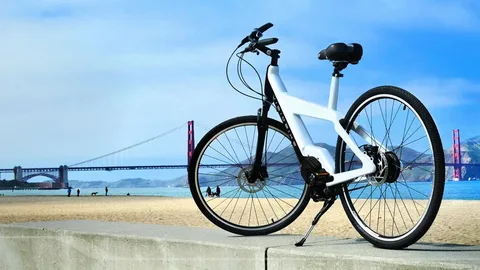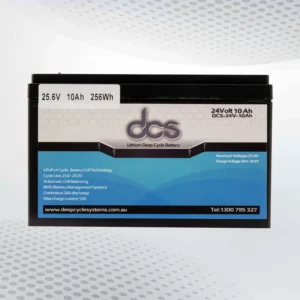As the popularity of electric bikes (e-bikes) continues to grow, electric bike batteries have become a critical component for both seasoned riders and newcomers alike. The battery is the heart of the e-bike, providing the energy required to power the motor and help riders conquer challenging terrains or commute effortlessly over long distances. Understanding how these batteries work, the different types available, and how to maintain them is essential for ensuring a smooth and enjoyable e-bike experience. In this guide, we’ll explore everything you need to know about electric bike batteries Brisbane, including their types, capacity, charging tips, and how to extend their lifespan.
What is an Electric Bike Battery?
An electric bike battery is a rechargeable energy source that powers the motor of an electric bike. The battery stores electricity and supplies it to the motor when needed, allowing the rider to pedal with assistance or, in some cases, use throttle-only modes without pedaling. The battery’s performance is measured in several ways, including voltage (V), amp-hours (Ah), and watt-hours (Who), which collectively determine how long and how far an e-bike can travel on a single charge. Electric bike batteries are typically mounted on the bike’s frame, rear rack, or integrated into the design. The size and weight of the battery can vary depending on the e-bike’s design and intended use.
Key components of an electric bike battery include:
- Cells: The basic units that store energy. Most e-bike batteries use lithium-ion cells, known for their high energy density and lightweight design.
- Battery Management System (BMS): A system that monitors and protects the battery from overcharging, overheating, and other risks, ensuring safety and longevity.
- Charging Port: The connector through which the battery is charged.
The quality and capacity of the battery are crucial factors that impact the overall performance of the electric bike, making it essential to choose a battery that aligns with your needs and riding habits.
Understanding Battery Capacity and Range
When it comes to electric bike batteries, understanding the concepts of capacity and range is crucial to making an informed purchase. The battery’s capacity directly affects how far and how long you can ride before needing to recharge.
Voltage (V)
Voltage represents the amount of power a battery can supply at a given time. Higher voltage generally means more power and faster speeds, but it can also drain the battery faster if not managed properly. Most e-bike batteries are available in 36V, 48V, and 52V configurations.
Common voltage levels for e-bike batteries:
- 36V: Suitable for standard commuter e-bikes with moderate power requirements.
- 48V: Offers more power and is common in performance e-bikes designed for off-road riding or higher speeds.
- 52V: Provides the highest power output and is ideal for high-performance e-bikes.
Amp-Hours (Ah)
Amp-hours measure the capacity of the battery, or how much electricity the battery can store. A higher amp-hour rating means the battery can supply power for a longer duration before it needs recharging.
Watt-Hours (WH)
Watt-hours is the most important measurement when it comes to understanding your e-bike’s range. It combines voltage and amp-hours to give you an estimate of how far you can ride on a single charge.
Factors That Affect Battery Range
Several factors can impact the range of your electric bike battery. While manufacturers provide a general estimate of how far you can ride on a single charge, your actual range may vary depending on several variables.
Rider Weight
Heavier riders will require more power to move the bike, which can reduce battery life and overall range. Conversely, lighter riders will typically get more mileage out of the same battery.
Terrain and Elevation
Riding on flat terrain requires less energy compared to hilly or mountainous areas. Steep inclines demand more power from the motor, which drains the battery faster. If you frequently ride in hilly regions, you may want to invest in a higher-capacity battery.
Pedal Assistance Level
Most e-bikes allow you to adjust the level of pedal assistance, which can range from low to high. Higher levels of assistance require more power from the battery, reducing the range. If you want to extend the battery life, use lower levels of assistance when possible and rely more on your pedaling.
Weather Conditions
Cold weather can significantly affect battery performance. In lower temperatures, the chemical reactions inside the battery slow down, reducing its efficiency and range. Hot weather can also damage the battery over time if it leads to overheating.
By considering these factors, you can better estimate the range of your e-bike and make adjustments to extend your battery life.
How to Extend the Lifespan of Your Electric Bike Battery?
An electric bike battery is a significant investment, so it’s essential to take proper care of it to maximize its lifespan. Here are some tips for extending the life of your e-bike battery:
Avoid Extreme Temperatures
Extreme temperatures, whether hot or cold, can damage your battery over time. Always store your e-bike and battery in a cool, dry place when not in use. Avoid leaving your bike in direct sunlight or freezing conditions for prolonged periods.
Charge Regularly, but Avoid Overcharging
It’s a good idea to charge your battery regularly, even if you haven’t used it for a while. However, avoid overcharging, as this can degrade the battery over time. Most modern batteries come with a Battery Management System (BMS) that prevents overcharging, but it’s still good practice to unplug the charger once the battery reaches 100%.
Use Partial Charges
Lithium-ion batteries, which are commonly used in e-bikes, perform best when they’re kept between 20% and 80% charged. Fully depleting the battery before recharging can shorten its lifespan, so try to keep it in this optimal range.
Store the Battery at 50% Charge
If you plan on storing your e-bike for an extended period, make sure to charge the battery to around 50% before putting it away. Storing the battery at full charge or completely depleted can cause it to degrade faster.
Clean and Inspect the Battery
Keep your battery clean and free from dirt and moisture. Periodically inspect the battery for any signs of damage, such as cracks or bulges, which could indicate a problem. If you notice anything unusual, have your battery checked by a professional.
By following these tips, you can help ensure that your electric bike battery lasts as long as possible, providing reliable performance for years to come.
How to Charge an Electric Bike Battery?
Charging an electric bike battery is a simple process, but there are a few important tips to ensure safety and maximize battery life.
Use the Manufacturer’s Charger
Always use the charger provided by the manufacturer or one that is specifically designed for your e-bike battery. Using the wrong charger can damage the battery or cause safety hazards, such as overheating or short-circuiting.
Charge in a Cool, Dry Place
It’s best to charge your e-bike battery in a well-ventilated area that’s protected from direct sunlight and extreme temperatures. Avoid charging in humid or wet environments, as this can damage both the charger and the battery.
Avoid Charging Overnight
While most e-bike batteries have a BMS to prevent overcharging, it’s still a good idea to avoid charging overnight. Unplug the charger once the battery reaches full charge to prevent unnecessary strain on the battery.
Partial Charging is Okay
Unlike older battery technologies, lithium-ion batteries don’t have a “memory effect,” meaning they don’t need to be fully discharged before recharging. Feel free to charge your battery after each ride, even if it’s not fully depleted.
By following these simple charging guidelines, you’ll ensure your battery stays in top condition and provides consistent power for every ride.
Replacing Your Electric Bike Batteries Brisbane: What You Need to Know?
Even with proper care, all electric bike batteries Brisbane will eventually degrade and need to be replaced. Over time, the battery’s capacity will decrease, and you’ll notice a shorter range on each charge. When it’s time to replace your battery, there are a few important factors to keep in mind.
Battery Compatibility
Make sure to replace your battery with one that is compatible with your e-bike’s motor and controller. Using the wrong battery can result in poor performance or even damage your e-bike’s electrical system. It’s best to consult your e-bike manufacturer or dealer to ensure you’re purchasing the correct replacement battery.
Recycle Your Old Battery
E-bike batteries contain materials that are harmful to the environment if not disposed of properly. Many e-bike retailers and manufacturers offer recycling programs for old batteries. Make sure to recycle your old battery responsibly rather than throwing it in the trash.
Battery Upgrade Options
If your current battery no longer meets your needs, consider upgrading to a higher-capacity battery. Upgrading your battery can extend your range and improve overall performance, especially if you frequently ride in challenging conditions.
Replacing your battery at the right time ensures that your e-bike continues to deliver optimal performance and range.
Environmental Impact of Electric Bike Batteries
As electric bikes become more popular, the environmental impact of electric bike batteries has become a topic of concern. While e-bikes are generally considered eco-friendly, the production and disposal of lithium-ion batteries can have environmental consequences if not managed properly.
Mining for Raw Materials:
Lithium, cobalt, and other metals used in batteries require mining, which can have negative impacts on local ecosystems and communities. Efforts are being made to develop more sustainable mining practices and alternative battery chemistries.
Battery Recycling:
Proper recycling of e-bike batteries is essential to reduce environmental harm. When disposed of incorrectly, batteries can leak harmful chemicals into the soil and water supply. Many manufacturers and retailers now offer battery recycling programs to ensure responsible disposal.
Sustainable Battery Technologies:
Researchers are developing new battery technologies, such as solid-state batteries, that aim to reduce the environmental footprint of e-bike batteries. These batteries could offer improved performance and longer lifespans while using fewer harmful materials.
By choosing to recycle your old batteries and support sustainable battery technologies, you can help minimize the environmental impact of your e-bike.
Conclusion
In conclusion, electric bike batteries are a critical component that significantly influences the overall performance, range, and efficiency of e-bikes. Choosing the right battery, whether based on capacity, voltage, or compatibility with your bike, ensures a smoother and longer-lasting riding experience. As technology continues to advance, newer battery options are becoming more efficient and environmentally friendly, offering better range and faster charging times. Proper maintenance and understanding of your battery’s lifecycle can help maximize its longevity and ensure optimal performance, making it a worthwhile investment for any e-bike enthusiast.
FAQs
How long does an electric bike battery last on a single charge?
The range of an electric bike battery depends on factors like capacity, terrain, rider weight, and assistance level. On average, a fully charged battery can last anywhere from 20 to 100 miles.
How often should I replace my electric bike batteries Brisbane?
Most electric bike batteries Brisbane last between 500 and 1,000 charge cycles. Depending on usage, you may need to replace your battery every 2 to 5 years.
Can I upgrade my electric bike battery to a higher capacity?
Yes, many e-bike models allow for battery upgrades to increase range. Make sure to choose a battery compatible with your e-bike’s motor and electrical system.
How do I properly dispose of an old electric bike battery?
E-bike batteries should be recycled through a proper recycling program. Check with your e-bike manufacturer, retailer, or local recycling facility to ensure safe disposal.
Can I charge my electric bike battery in cold weather?
Charging your battery in extremely cold temperatures can reduce its lifespan. It’s best to charge your battery indoors at room temperature to maintain optimal performance.
| Related Business Listings |
| Contact Directory |
| Local Business Profiles |



